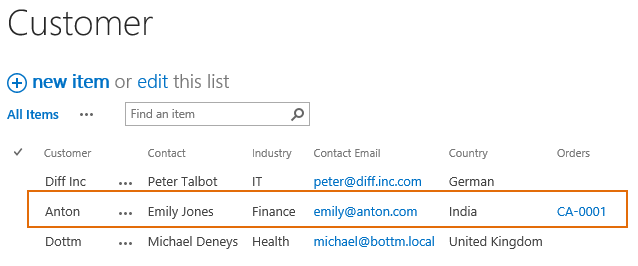
- BoostSolutions
-
Products
-
- Microsoft Teams
- HumanLike Alert Reminder
- View All Apps
- Pricing
- Support
- Company
By creating an automatic reverse lookup column, you can build a bi-directional connection between SharePoint lists.
Take Orders and Customer lists as example, in the Orders list, once you specify a customer for an order, the order information will be automatic related to the selected customer reversely in the Customer list.
This article will demonstrate how to create a reverse lookup column using Cascaded Lookup.
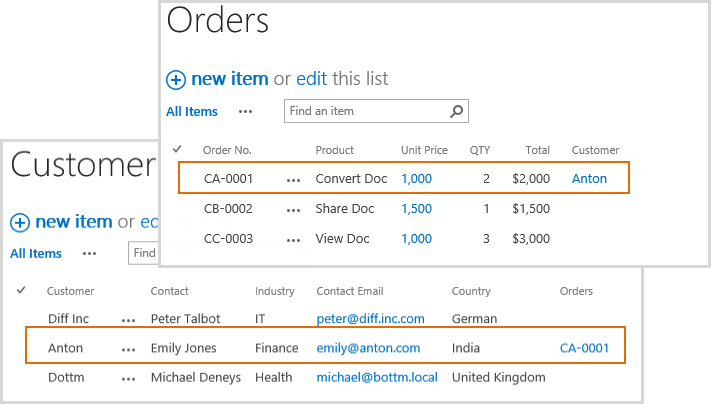
The Customer column in Orders list is a Cascaded Lookup column, and the Orders column in Customer list is a reverse lookup column of the Customer column, when order CA-0001’s customer value is specified as Anton, CA-0001 will be automatic related to Anton reversely.
Then, create the other list named as Orders from the custom list template with following columns and items on a SharePoint site.
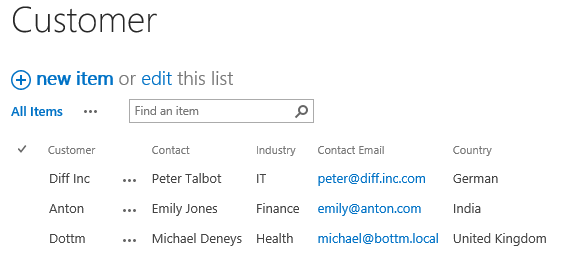
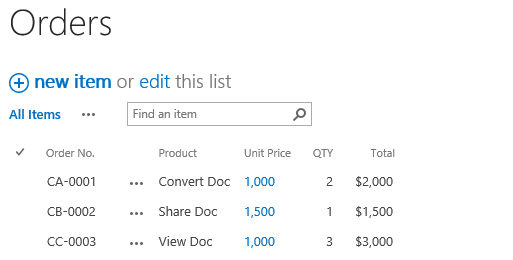
Download the trial version of Cascaded Lookup, and install it to your SharePoint server.
Navigate to the Orders list prepared above, click List tab. In the Manage Views group, click Create Column .
Or go to the List Settings page and click the Create column link in Columns section.
If you already created a Cascaded Lookup column, please skip to step 6.
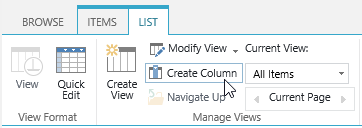
In the Name and Type section, enter a name in the Column Name field to give it a meaningful name such as Customer, then select Cascaded Lookup as the type of information in this column.
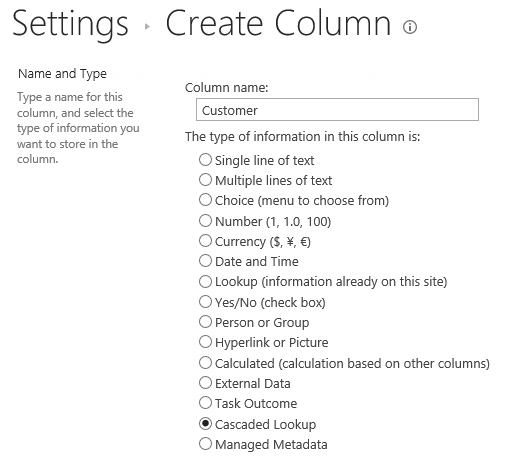
In the Additional Column Settings section, keep all settings as default.
In the General Settings section, configure settings as following.
In the Get information from this site box, select Marketing Center, because in our example the Customer list is located in a SharePoint site named as Marketing Center. You need to select the corresponding SharePoint site in which your Customer list is located.
In the From this list box, select Customer.
In the In this column box, select Customer.
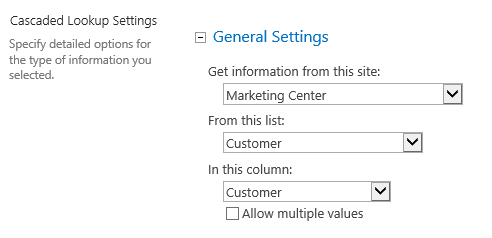
In the Target Column Settings section, select the check box of Create a reverse lookup field in the target list option.
When the configuration part appears, type Orders in Column Name textbox; and in In this column dropdown list, select Order No..
And select the checkbox of Allow multiple values option.
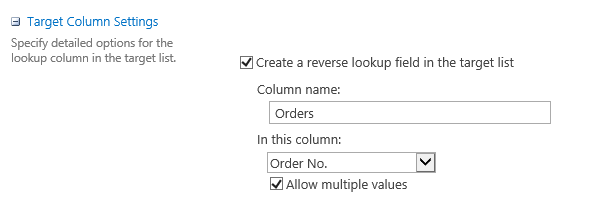
The configurations in Target Column Settings section means that a Cascaded Lookup column named as Orders will be created in the Customer list and retrieve values from the Order No. column from the current list (the Orders list).
Keep other settings as default and click OK.
In the Orders list, specify the Customer for order CA-0001 as Anton.
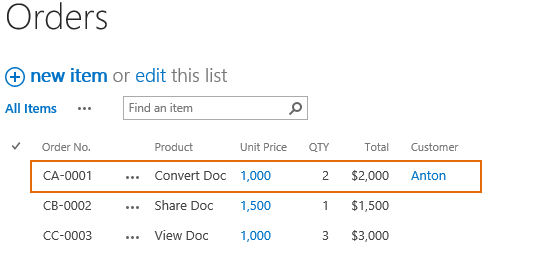
And then navigate to the Customer list, you will find that order CA-0001 is related to the customer Anton.
